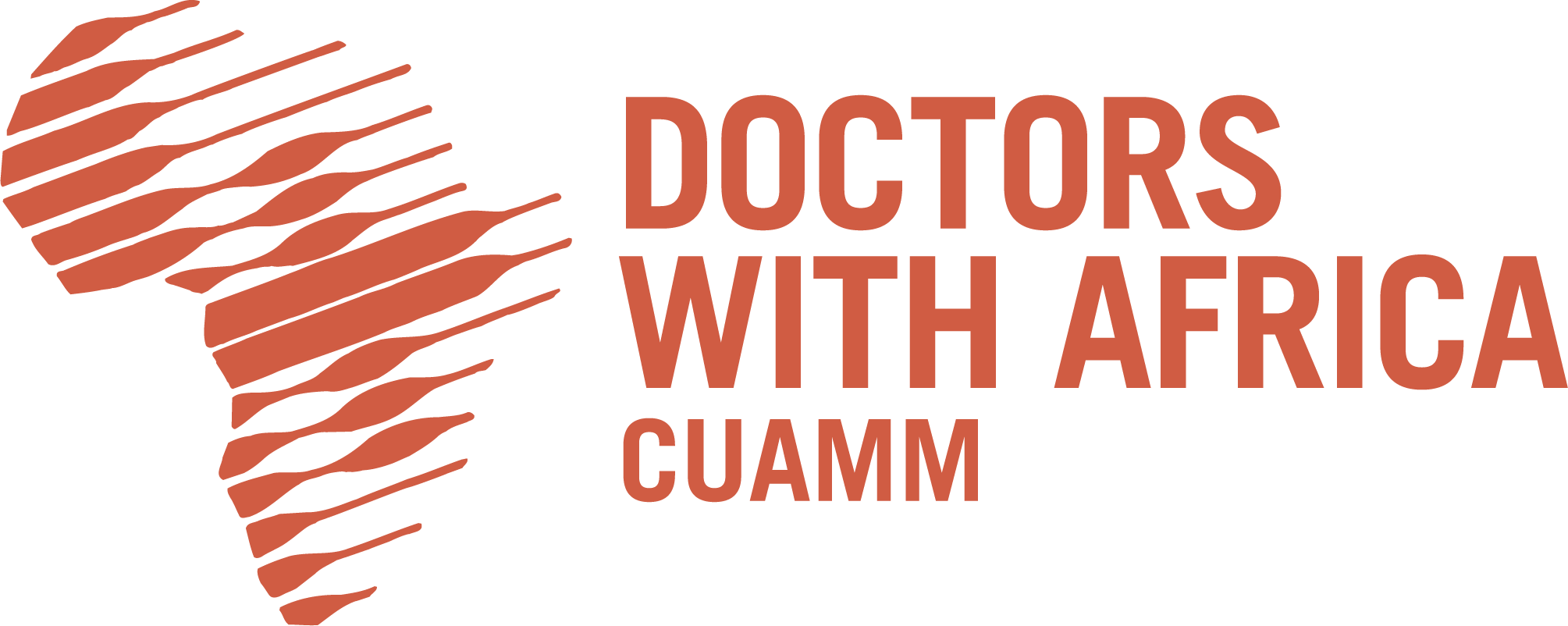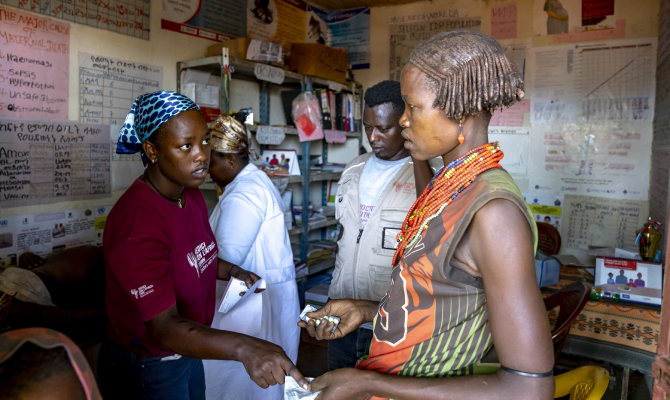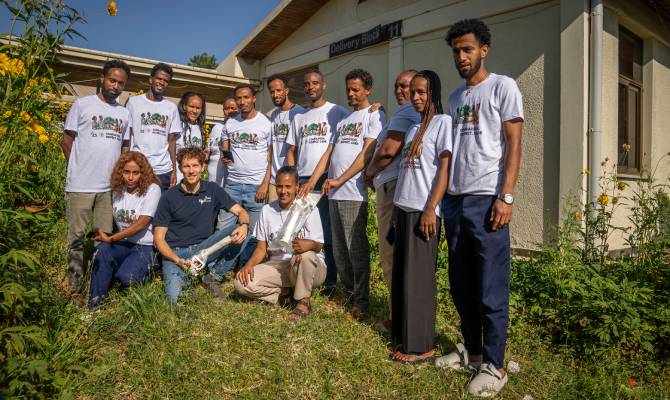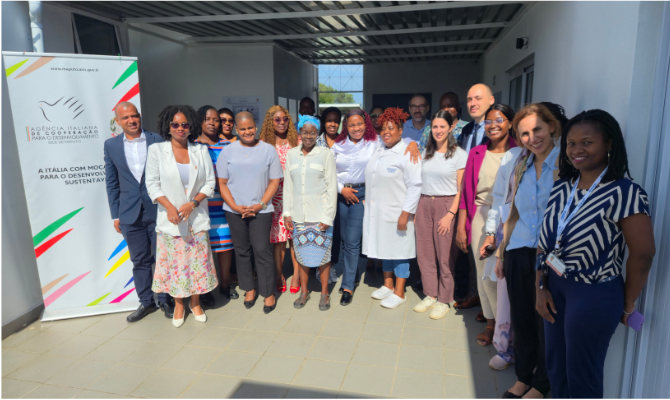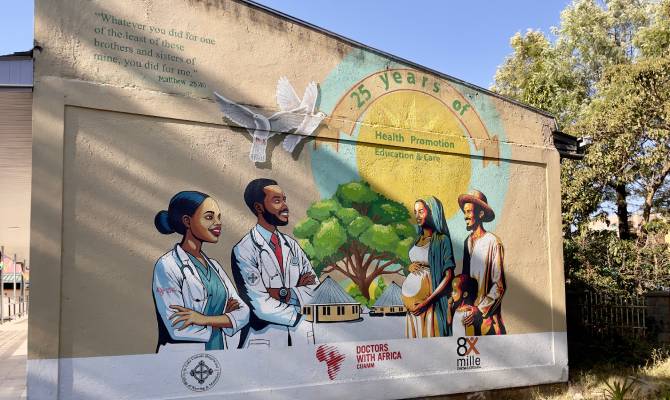Doctors with Africa CUAMM has officially entered the WHO Global outbreak alert and response network (GOARN). The network, composed of over 250 technical insitutions, provides international public health resources to control outbreaks and public health emergencies across the globe. Staff, resources and experts selected from the members are deployed to affected countries to deliver rapid and effective support under the coordination of an Operational Support Team based at the WHO headquarters in Geneva and governed by a Steering committee.
Being part of the network, Doctors with Africa CUAMM has recently taken part in the response intervention to the famine and drought crisis in the Greater Horn of Africa, an unprecedented emergency that is affecting Gibuti, Ethiopia, Kenya, Somalia, South Sudan, Sudan and Uganda. The current response to the crisis, including the health response appears to be deeply insufficient. Epidemic disease outbreaks are currently one of the main public health concerns, especially considering the increased susceptibility to infections due to malnutrition and micronutrient deficiencies, particularly in children. CUAMM has therefore stepped in to respond to the GOARN call for an epidemiologist to be deployed in the intervention area with the aim of strengthening the prevention and response to outbreaks and other health emergencies therefore minimize their impact.
«As extreme climate events worsen and become more frequent, disease outbreaks, food insecurity, forced displacements and conflicts will incresingly threaten people’s health. Rather than keep calling it a emergency, we should move towards a paradigm shift to unlock a new, more sustainable approach to humanitarian aid. Prevention, preparedness and adaptation will require collaboration at multiple levels. By acting with both communities, institutions and policymakers we can shape a new health cooperation system able to face challenges ahead» said Francesco Vladimiro Segala – CUAMM Epidemiologist who supported the WHO Country Office in Nairobi, Kenya.
THE REGION
The Greater Horn of Africa region is among the most vulnerable areas in the world to the impact of climate change. Extreme weather events, particularly droughts and floods, are occurring with increasing frequency. Five consecutive failed rainy seasons have led to the worst drought in the region’s recent history. From March to May 2023 floods have replaced the drought in many of the seven countries: Djibouti, Ethiopia, Kenya, Somalia, South Sudan, Sudan, and Uganda.
The climate crisis is being exacerbated by economic shocks related to the socio-economic outcomes of the COVID-19 pandemic, the fluctuation of food and fuel prices, and conflicts that have caused widespread displacement and hindered people’s ability to grow their own food. Now, with the onset of El Niño, a series of extreme weather events is expected to hit the Horn of Africa region, including droughts, floods, hurricanes, and heatwaves that could harm human health.
THE CLIMATE CRISIS IS A HUMANITARIAN CRISIS
As a consequence of extreme weather events, a higher risk of increased vector-borne diseases (malaria, dengue, yellow fever, Rift Valley fever) and waterborne diseases (cholera, AWD) is expected to emerge. In May 2022, the WHO classified the crisis as a level 3 emergency, being the first food and health crisis to receive this classification. Projections indicate that this will be a prolonged emergency due to the negative impact of El Niño on the health and nutritional situation. To date, the emergency continues with more than 55 million people facing critical levels of food insecurity; 11 million children under five years of age at risk of acute malnutrition, of which 2.7 million are severely malnourished and in need of hospital care.
Food crisis bring about health crisis: the lack of adequate food promotes malnutrition and diseases. The number of disease outbreaks reported in the Horn of Africa has reached the highest level ever recorded this century. The region is battling multiple disease outbreaks, including cholera, type 2 poliovirus, measles, meningitis, malaria, dengue fever, hepatitis E, leishmaniasis, and anthrax. The frequency of these diseases can be directly linked to extreme weather events.
DOCTORS WITH AFRICA CUAMM EXPERIENCE AND RESPONSE IN ETHIOPIA
Doctors with Africa CUAMM began providing services to Ethiopians in crisis-affected and underserved communities in 1980. Since then, has adopted a multifaceted approach that combines long-term interventions with emergency relief to respond to conflict and climate shocks in Ethiopia while also building a long-lasting impact through the support to the national health system.
In recent years, Ethiopia has been affected by multiple crises, which have worsened the already precarious humanitarian situation. The South Omo region is, in particular, one of those most severely affected by the impact of El Niño. The region currently counts over 60,000 internally displaced persons (IDPs), particularly in the Woreda of Dassenech where Doctors with Africa CUAMM, in collaboration with CST, is implementing the project “Reach Out – Humanitarian response with lifesaving services and protection for the Dassenech Communities affected by drought in South Omo,” funded by the Italian Agency for Development Cooperation. The area, predominantly inhabited by semi-nomadic pastoral communities, has been severely affected by climate change in recent years: periods of drought alternate with severe floods are threatening people’s livelihoods, increasing the risk of disease and death, and fueling mass migration.
As a result, food insecurity and malnutrition are increasing: according to data from the Woreda Health Office, a Global Acute Malnutrition (GAM) rate of 36.4% was recorded over the last months, as is the risk of epidemic, especially those caused by contaminated water. Health services are becoming increasingly inaccessible due to the difficulty of movement and damage to infrastructure. It is within this context that the CUAMM team continues to provide support and medical care to communities through mobile health clinics (MHNTs), particularly in various areas of the Woreda. MHNT are also being deployed in other areas of the Country as Amhara and Somali regions. To respond to the needs of the most affected and vulnerable populations, including refugees and internally displaced person, over the last year CUAMM ha salso managed health facilities (in Gambella), and supported the post-conflict rehabilitation of some hospitals in Tigray region. At the present moment, CUAMM’s interventions in Ethiopia encompasses health and nutrition and emergency response. Our approach provides communities with immediate assistance and sustainable solutions, fostering self-reliance and resilience in local communities and refugee camps.
